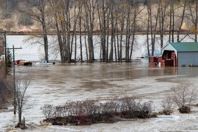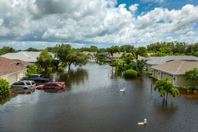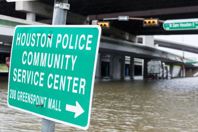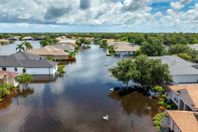RESILIENCY RESOURCES
-
Extreme weather and seismic threats are driving a new collaborative approach to infrastructure. By aligning utility needs with academic research and manufacturing innovation, providers can validate resilient technologies and deploy data-backed solutions for long-term reliability.
-
While many scientific and technical reports show that floods are becoming larger and more common, reports underestimate how their frequency is changing. Flood sizes get the spotlight, but governments and experts need to also consider their frequency to address implications overlooked by traditional management methods.
-
We’re living through a fundamental shift in how nation-states and criminal organizations target critical infrastructure. By threatening to disrupt water, power, and other essential services, adversaries hope to keep American resources focused at home rather than abroad, or to deter U.S. intervention in a conflict altogether.
-
Global Water Outcomes expert notes that “water utilities are facing unprecedented challenges and opportunities,” citing the role of digital solutions moving forward.
-
Water scarcity is increasingly impacting sectors from agriculture and energy to urban planning and high-tech manufacturing. Recently, industry leaders gathered to explore how new technologies and complex industrial demands are forcing a fundamental rethinking of water infrastructure.
-
Accurate storm surge predictions are critical for giving coastal residents time to evacuate and giving emergency responders time to prepare. But storm surge forecasts at high resolution can be slow.
-
There are three potential options to contain floods with tunnels to direct excess water out of Houston to the coast. As researchers who study disaster resilience, we bring complementary expertise to analyzing this complex discussion. Here are what we see as the key factors for the city to consider.
-
The 2024 hurricane season was one of the most severe on record, creating unprecedented destruction to the tune of $182.7 billion worth of damage. Scientists predict that this year's storm season, which officially began June 1, will likely be highly active and volatile as well. As hurricanes become more difficult to accurately predict and prepare for, the damage caused by burst pipes, flooding, downed trees and debris, and disrupted utilities is also increasing.
-
No one knows more than water utilities how changing climate conditions are impacting the challenges and costs of delivering clean drinking water to communities they serve. In a recent episode of The Water Online Show, climate experts Jesse M. Keenan from Tulane University and Edgar Westerhof of Arcadis discussed the issue of resiliency for drinking water and wastewater systems.
-
The digital transformation of utilities is necessary and inevitable but also innately vulnerable to bad actors. It's time to discuss prioritizing cybersecurity.











